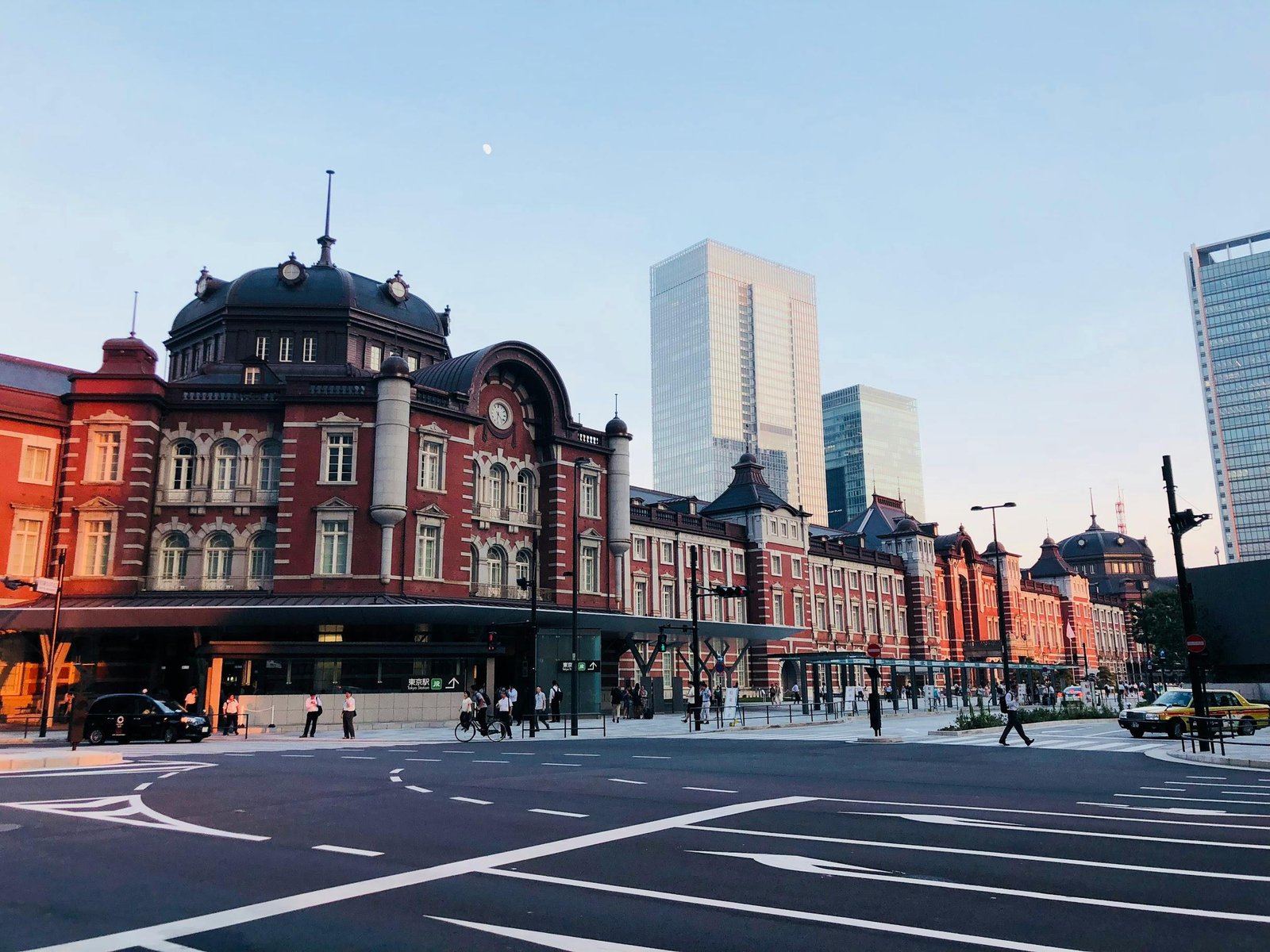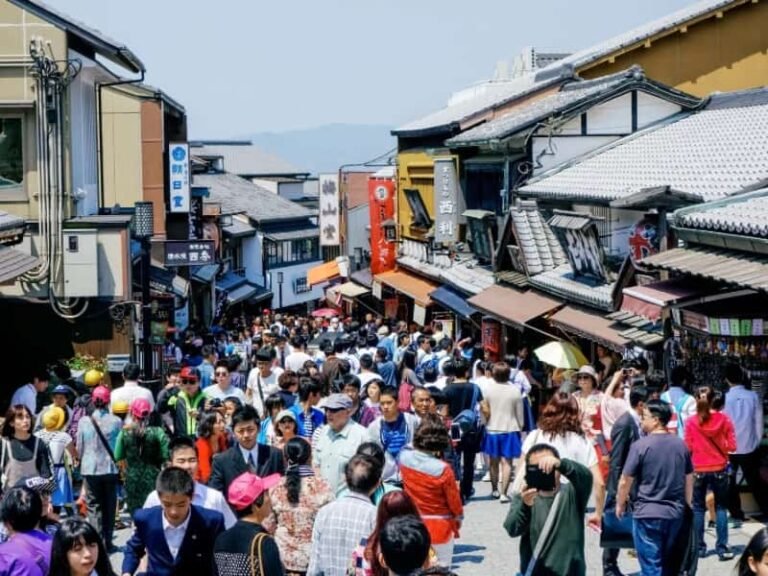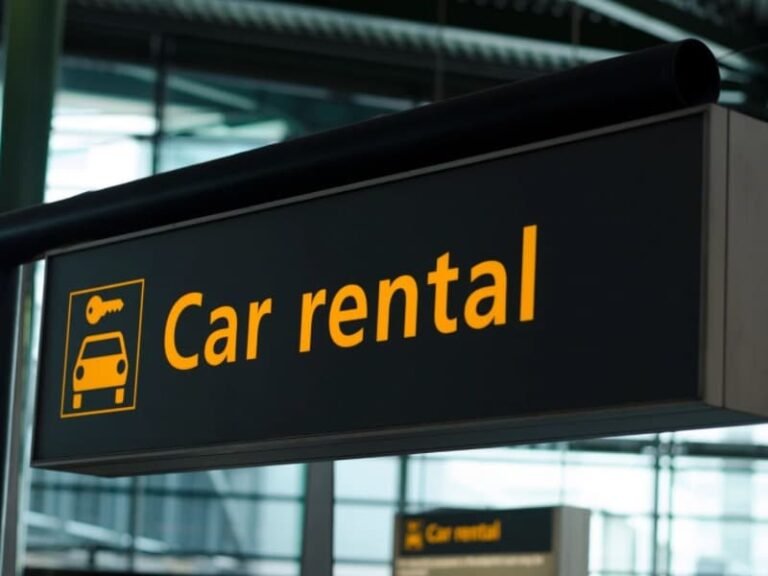How to Use the Train in Tokyo as a Tourist: Step-by-Step Travel Guide
As someone who commuted in Tokyo for years, I’ve experienced the city’s legendary train system at its best—and its most challenging.While Tokyo boasts one of the world’s most efficient public transportation networks, navigating it as a tourist can be overwhelming.
I explain how to use the train in Tokyo as a tourist in this blog post. Hope this guide is helpful for your next travel to Japan!
Table of Contents
ToggleUnderstanding Tokyo's Railway Network
Tokyo’s railway system consists of several different operators:
- JR East (Japan Railway) – Runs the iconic Yamanote Line (the green loop around central Tokyo) and other major lines
- Tokyo Metro – Operates 9 subway lines throughout the city
- Toei Subway – Runs 4 additional subway lines
- Private Railways – Companies like Keio, Odakyu, and Tokyu operate lines extending to the suburbs
This fragmented system explains why Tokyo’s rail map looks like a complex web of multicolored spaghetti! (Please see the sample map below. Really looks like spaghetti!!) However, with a few key strategies, you can navigate it like a local.
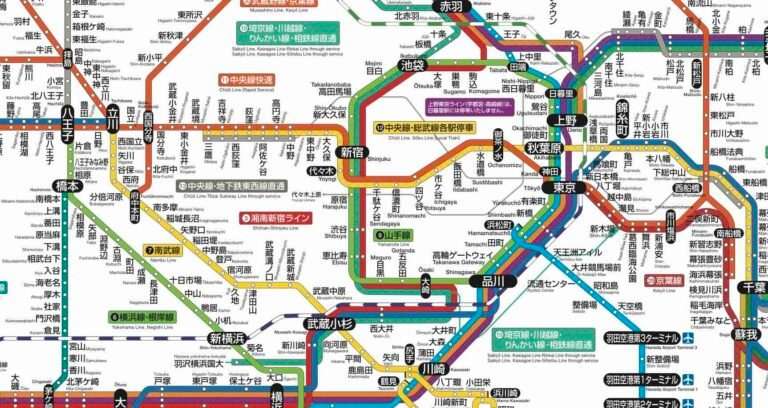
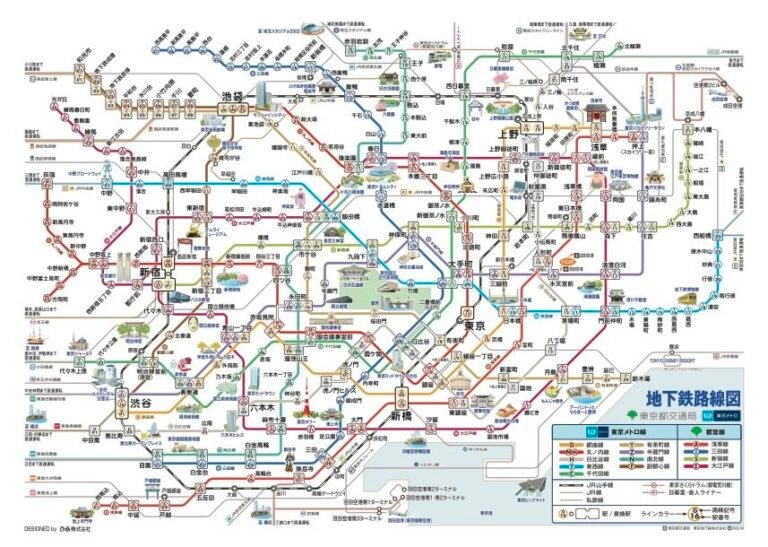
Essential Tools for Tokyo Train Travel
- IC Card (Suica or Pasmo) – These rechargeable smart cards eliminate the need to buy individual tickets for most journeys
- Navigation App – Japan Travel by Navitime or Google Maps both provide excellent train directions
- Tokyo Metro Map – The official subway map is invaluable despite its “spaghetti-like” appearance; pick up a physical copy at any tourist information center or download the PDF to your phone
- Station Maps – Screenshots of major station layouts can save you time
- Basic Japanese Phrases – A few key phrases can help in confusing situations
Avoiding Rush Hour: A Matter of Survival
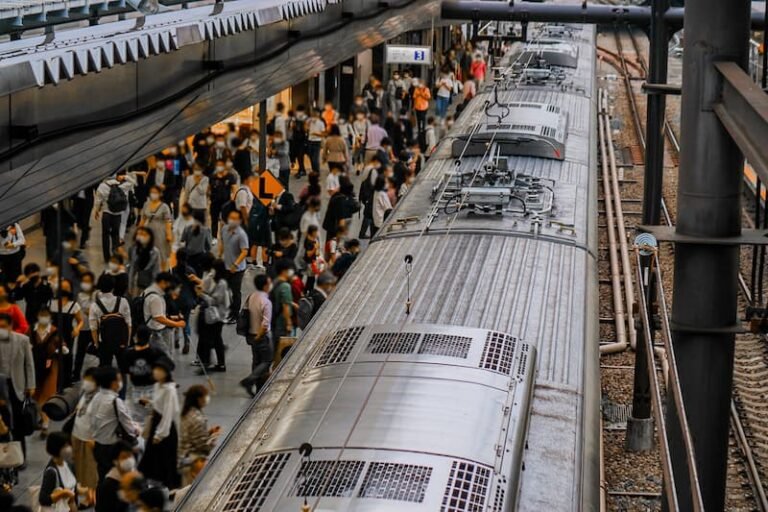
Why Rush Hour in Tokyo is Different
As someone who commuted daily in Tokyo, I cannot stress this enough: avoid rush hour if possible. Tokyo rush hour (7:30-9:00 AM and 5:30-7:30 PM weekdays) is unlike anything you’ll experience in America.
During my commuting years, I had multiple umbrellas broken from being pushed into packed trains. On some lines, station attendants (known as “pushers” or oshiya) literally push passengers into the train cars to fit more people.
For Tourists with Luggage
If you’re traveling with large suitcases, rush hour becomes not just uncomfortable but nearly impossible. Many Japanese commuters become visibly frustrated with tourists who take up valuable space with luggage during these peak times.
Rush Hour Alternatives
- Travel between 10:00 AM and 4:00 PM whenever possible
- Consider taxis for morning airport transfers even though they cost more
- Stay near your arrival/departure stations on your first and last days
- Check your hotel’s airport shuttle options to avoid trains entirely with luggage
Step-by-Step Guide : How to use the train in Tokyo

1. Getting an IC Card
The first thing you should do upon arrival is get a Suica or Pasmo card:
- Available at any major JR East station ticket machine, Haneda/ Narita Airport
- Requires a ¥500 deposit (refundable when you return the card)
- Initial charge amount: I recommend ¥3000 for a few days of travel
- Simply tap to enter and exit gates
2. Planning Your Route
Using your navigation app (ex, Google Map):
- Enter your destination (station name or attraction)
- Review the suggested routes, noting:
- Transfer stations
- Platform numbers (if available)
- Total fare
- Total time
Pro tip: Sometimes a slightly longer route has fewer transfers and is easier with luggage
3. Navigating Stations
Tokyo stations can be massive, multi-level complexes. Here’s how to find your way:
- Follow the colored lines on the floor corresponding to different train lines
- Look for exit numbers (major stations have dozens of exits)
- Use escalators for changing levels (elevators exist but may be hard to find)
- When in doubt, look for station staff at the ticket gates
4. Train Etiquette with Luggage
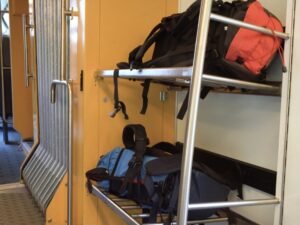
Based on my experiences and observations of frustrated commuters, here are the unwritten rules for luggage on Tokyo trains:
- Place small/medium suitcases between your legs or in front of you
- For large suitcases, use the space at the end of the car near the doors
- During crowded times, consider waiting for the next train if yours is packed
- Remove backpacks and hold them in front of you
- On escalators, stand on the left (in Tokyo) with your luggage (the right side is for walking)
Common Mistakes Tourists Make
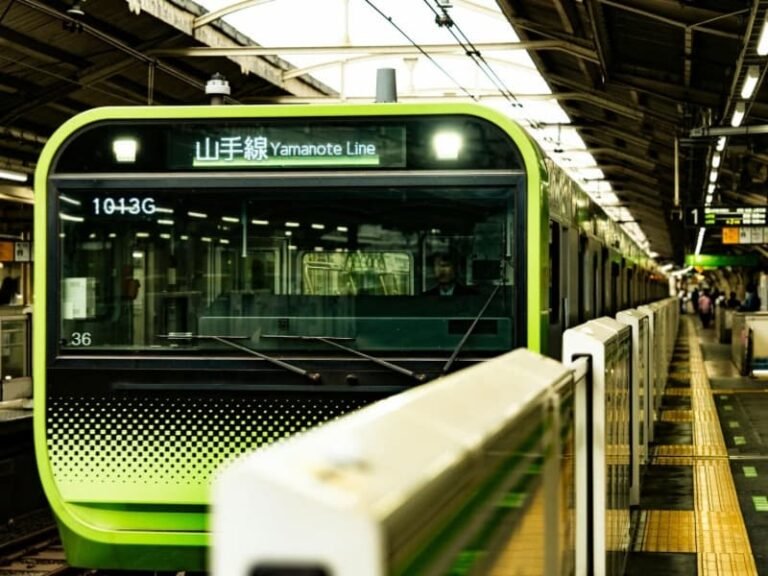
JR or some private company’s train often have different train types on the same track:
- Local (各駅停車/Kakueki Teisha) – Stops at every station
- Rapid (快速/Kaisoku) – Skips some stations
- Express (急行/Kyūkō) – Skips more stations
- Limited Express (特急/Tokkyū) – Stops only at major stations (often requires extra fee)
Always check the train type on the electronic board before boarding!
1. Getting on the Wrong Platform Direction
Many tourists board trains going in the opposite direction of their destination. To avoid this:
- Verify the terminal station (the last stop) in your desired direction
- Look for platform signage showing the line color and terminal station
- When unsure, ask a station attendant “[Your destination] wa dochira desu ka?” (Which way to [destination]?)
2. Getting Caught in a Train Door
The doors on Tokyo trains close automatically and with precision timing. While Tokyo train doors can reopen when blocked, they will quickly attempt to close again after a very brief moment.
When the departure bell sounds (usually a cheerful melody), it means the doors are about to close. If you hear this sound and aren’t already boarding, it’s best to step back and wait for the next train rather than rushing to squeeze in. Attempting to force doors open or jumping in at the last second is considered inconsiderate and can delay the entire line—something that rarely happens in Tokyo’s punctual system.
Useful Japanese Phrases for Train Travel

- Sumimasen (すみません) – Excuse me/Sorry
- Kono densha wa [station name] ni ikimasu ka? (この電車は[station name]に行きますか?) – Does this train go to [station name]?
- [Facility] wa doko desu ka? ([Facility]はどこですか?) – Where is [the facility]? (Use for finding bathrooms, ticket offices, etc.)
- Tasukete kudasai (助けてください) – Please help me
- Eigo ga hanasemasu ka? (英語が話せますか?) – Do you speak English?
Final Tips from My Experience
After years of commuting in Tokyo and helping visiting friends navigate the system, these are my top tips:
- Allow extra time – Everything takes longer when you’re unfamiliar with the system
- Have your hotel’s address in Japanese – To show taxi drivers if you get lost
- Take photos of important signs/maps – For reference if you lose internet connection
- Travel light whenever possible – You’ll enjoy your trip much more
- Embrace the adventure – Even getting lost in Tokyo can lead to unexpected discoveries
Have you used Tokyo’s train system before? What challenges did you face? Share your experiences from the comment section below!
